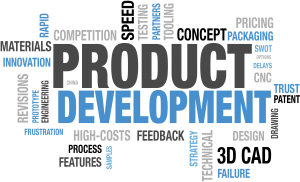 Ever notice that whenever we want to put a leader in a new role we always make the perfunctory demand they be a good Communicator? It’s seemingly been this way forever.
Ever notice that whenever we want to put a leader in a new role we always make the perfunctory demand they be a good Communicator? It’s seemingly been this way forever.
What does this really mean? What are we looking for?
Clearly the person must be skilled in articulating their thoughts professionally and be able to state them in an accurate and situation-appropriate manner.
Is this alone, enough? Not really. So, when interviewing we typically review other relevant, seemingly supporting and complementary job-specific skills such as knowledge of this, expertise in that.
Yet even these requirements do not help us fully address what we truly might want to see in the candidate.
The fact is leaders are fundamentally representatives. They head Teams, Groups, Organizations, and Companies.
A major part of a leader’s role is clarifying the needs, objectives, challenges, results and more that their organizational groups also need to communicate outwardly. So, to be really effective a leader must additionally be a great Interpreter of these issues.
Being exceptional in communicating your own thoughts and ideas is one thing, but what about the situation where you might have little specific immediate knowledge to impart? In this case when you lead any group of people you will invariably then need to advocate and present what is essentially their case, from the information they provide.
Most leaders are not inherently expert in the many diverse disciplines resident within their organizations. Nor are they knowledgeable of all the details swirling around often numerous activities.
So to represent their groups, leaders first have to dig out or review facts/detail, then assess, formulate, summarize and finally articulate the outbound communication required.
Regardless of their size, organizations normally have to seamlessly communicate both laterally and vertically. Often they need to be represented to other organizations of different disciplines. Leaders must present their issues to peers, other executives, boards, companies, customers, suppliers and more.
Often these same groups/teams have unique or specialized vocabulary while possessing diverse/sophisticated skills and knowledge.
Clearly the ability to interpret in such varied situations and for differing personnel is critical.
Ever seen recruiters, hiring managers or even boards consistently and specifically searching for an exceptional Interpreter? Not too often. This common need is rarely specifically stated. However, it is often of paramount importance that an individual’s skill in this area be exceptional.
Certainly if an individual evidences great skill as an Interpreter, you’ll often soon uncover their supporting abilities to (un-prioritized):
- Work Closely with Others
- Empathize
- Stimulate Ideas from Others
- Understand Diverse Issues
- Synthesize Concepts
- And, much more
On two occasions I was personally appointed to executive positions for the primary reason of being perceived as a good interpreter. This is notable here for two reasons:
- In neither case was I told this was a critical job requirement
- In both cases the current board and executive teams couldn’t clearly understand what the exceptionally skilled engineering team was telling them
Admittedly, these facts provide troubling food-for-thought on many fronts. Not least, why weren’t the job spec or interviews set to ensure candidates came prepared to showcase their specifically relevant skills? Nevertheless, these experiences clearly illustrate the importance of being able to Interpret from and Communicate for others.
Being a good Interpreter is not simply about having expertise in a field or the discipline in discovery. It is more important that a leader be (un-prioritized):
- Inquisitive
- Questioning
- Nonthreatening and Diplomatic
- Thorough and Rigorous
- Open-minded
- Trustworthy
It’s noticeable that many of these traits are those possessed by a good Problem Solver, too. Coincidence?
Now, returning to our theme: For Leaders in general, the larger the organization the more diverse and numerous the skill-sets embedded in the enterprise. So, inevitably as a Leader you can’t know everything, but you must preferably be able to interpret anything.
And, such competence has much broad application in personal life.
We must often interpret for others when living many of the roles in which we find ourselves.
By analogy, Mothers explain to others what their toddlers are saying. Parents support difficult, less-articulate teenagers with teachers and even family/friends. And, so on.
We are constantly interpreting by understanding the desires, wants, needs and facts presented to us by others.
In the workplace the need for skilled interpretation is obvious. You and your organization are not going to succeed unless issues, objectives, data and purpose are accurately interpreted and appropriately articulated.
Are you doing the best job in interpreting for those you represent? Their ideas and sustained efforts are essential. Do they feel understood and well-represented by you?
Take a close look at your interpretation skills. Should they be sharpened to better leverage and communicate the issues and opportunities within your organization?
Above all, remember: You can be a great communicator, but without Interpreting, then appropriately Considering, Valuing and Using the insights of others, you’re really only going it alone.
Ian R. Mackintosh is the author of Empower Your Inner Manager Twitter @ianrmackintosh








